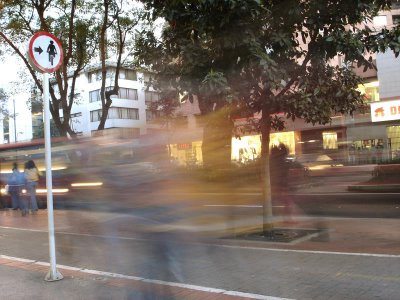sábado, febrero 04, 2006
Dia Sin Carro

The original Car Free Day proposal set out a challenge for a city, neighborhood or group:
- • To spend one carefully prepared day without cars.
- • To study and observe closely what exactly goes on during that day.
- • Then, to reflect publicly and collectively on the lessons of this experience and on what might be prudently and creatively done next to build on these.
The point of departure for this exercise was the determination that you cannot usefully engage in meaningful dialogue with addicts, that what you have to do is start treating them in some way. As often as not this meant thrusting the poor souls into a no-choice situation, at least for a time. In this particular instance the proposed "treatment" was to find an answer to the following question in three main parts:
- • Is there a way to get drivers out of their cars in one or more cities...
- • In ways which will be tolerable in a pluralistic democracy...
- • For at least be long enough to allow those concerned to learn a great deal more about the whole complex of things that need to be adjusted and introduced to make a car-less (or, more accurately, less-car) urban transport paradigm actually work?
One of the main tasks of planners and policy makers is to ask creative questions. Another is to create a process whereby these discussions are brought into the political and technical planning processes.
Car Free Day
Car-free zones
Car-free movement
World Naked Bike Ride
Critical Mass
Reclaim the Streets
Critical Mass
Worldwide Critical Mass Hub
Flickr Photos tagged with Critical Mass
How to Start a Critical Mass Ride
[url=http://gjhnromm.com/sqex/uomz.html]My homepage[/url] | [url=http://pqehawra.com/ajnz/xiyp.html]Cool site[/url]
<< Home
